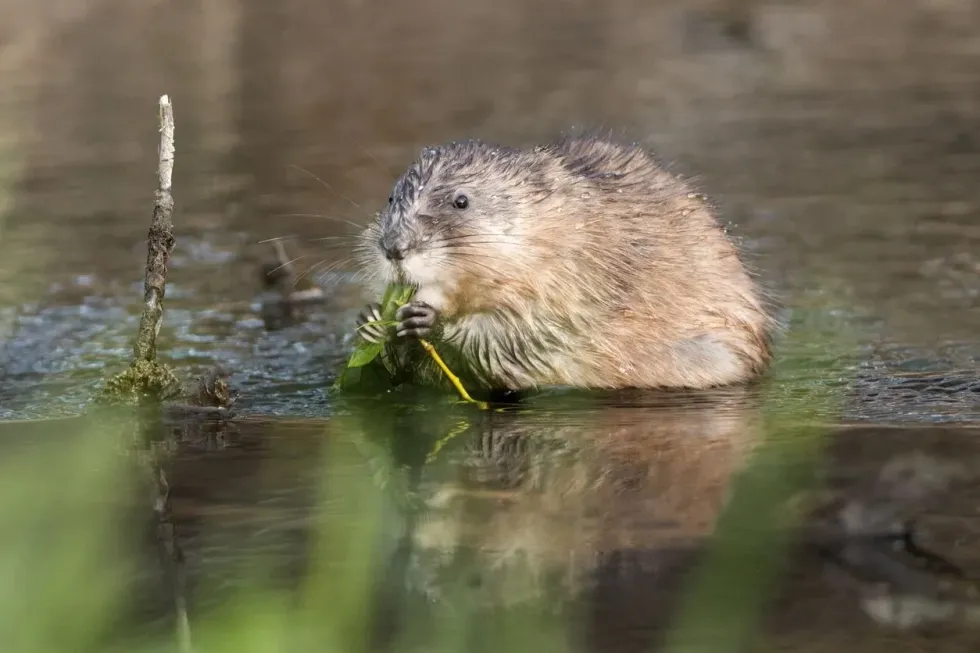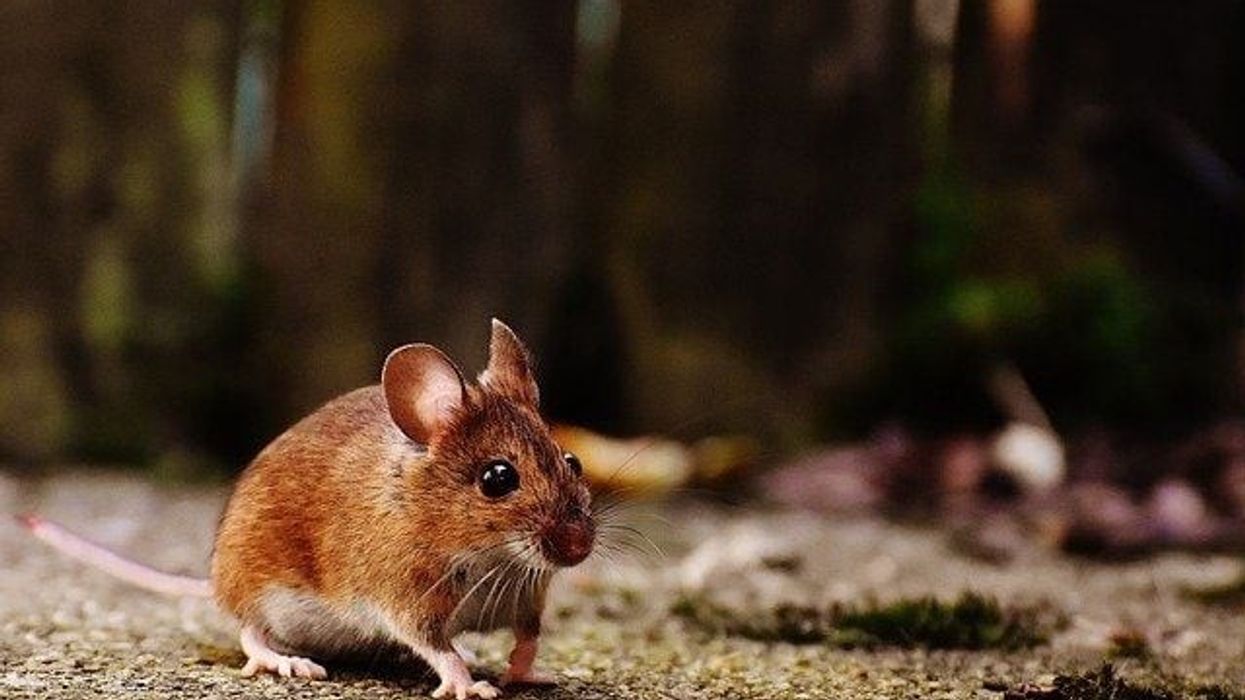You may not like muskrats very much owing to their aggressive nature and littering habits, but we urge you to read these amazing facts about the animal that will surely stimulate your interest. Muskrats are medium-sized rodents whose habitat is mainly wetlands.
These animals like staying underwater and they also have the ability to stay underwater for quite some time. They have webbed feet which help them swim pretty well.
They can currently be found in North and South America, Europe, and Asia. These little mischievous animals grow quite fast in numbers.
They can have about eight young kits per year. They eat plants they get in the water and some animals too, and they are really good for the environment as they help keep the balance.
Read on to know more of these incredible Muskrat facts for kids, adults, and all. If you like this article, then check out porcupine and Northern short-tailed shrew facts.
Muskrat Interesting Facts
What type of animal is a Muskrat?
Muskrat (Ondatra zibethicus) looks a lot like rats but in general, are semi-aquatic rodents with webbed hind feet. They are mammals and omnivorous in nature.
What class of animal does a Muskrat belong to?
Muskrat (Ondatra zibethicus) comes under the class of Mammalia.
How many Muskrat are there in the world?
There is no fixed number. Many litters die young and some live longer so a number is difficult to quote. Muskrats multiply themselves at a high rate and are hunted frequently as well so an apt number is difficult to maintain.
Where does a Muskrat live?
These animals are semi-aquatic in nature. They are mainly native to North America and later they spread across the nations of South America, Europe, and Asia. They can be found in some parts of the United States and in a small part of Mexico too.
What is a Muskrat's habitat?
Muskrats lodges in wetland areas because they are semi-aquatic. They like swimming underwater given their webbed feet. This species generally has its habitat near fresh water bodies, rivers, lakes, or ponds.
Who do Muskrats live with?
Muskrats are animals who spend most of their time underwater. The Muskrat stays with families that include the young ones and the male and female pair. They produce kits very frequently, hence grow in numbers very fast.
How long does a Muskrat live?
The average lifespan is about three to four years. In some cases, they can even live up to 10 years. They can live longer if they are not hunted by humans much for their fur. They get trapped constantly and at times, when the water level fluctuates, they naturally face several problems with their habitat and mortality.
How do they reproduce?
The breeding season of the Muskrats is somewhere around March to August. They mate while they are a little submerged in the water or on top of any floating substances on water. They produce up to eight litters per year.
What is their conservation status?
The conservation status according to the International Union for Conservation of Nature is Least Concerned, except for the round-tailed muskrat, whose status is Decreasing. These animals grow in numbers very fast which helps their population even after every year Muskrats get hunted by humans.
Muskrat Fun Facts
What do Muskrats look like?
The Muskrats are beaver lookalikes with partially webbed hind feet and a furry body. It is a medium-sized semi-aquatic rodent.
They have brownish to blackish short thick fur all over their bodies but their long tail is made up of scales and is of immense use during propulsion. The fur has two layers and this fur protects them from adverse temperature. Their bellies are a little lighter in color and turn grayish as they grow older.
How do they communicate?
They converse with the help of a secretion from their respective glands called musk. This also helps in warning the intruders. Muskrats are also capable of vocalizing by squeals and squeaks.
How big is a Muskrat?
Muskrats are usually compared with beavers. They are much smaller in size. They are about 15.7 -27.5 in long (40-70 cm).
How fast can a Muskrat run?
Muskrats can run about 3 mph (4.8 kmph). This speed helps them stay safe while they are being hunted down.
How much does a Muskrat weigh?
A Muskrat is a medium-sized animal that weighs around 1.3-4.4 lb (0.6-2 kg).
What are their male and female names of the species?
The male and female names of the species are known as a doe and a buck.
What would you call a baby Muskrat?
A baby or a young Muskrat is known as a kit. The kits are nursed by their mothers and depend on her for milk.
What do they eat?
Muskrats depend mainly on a huge variety of aquatic plants and vegetation, such as cattails, sedges, bulrush, arrowhead, aqua lilies, corn, alfalfa, and clover. Other than these aquatic plants, they also feed on sea fish like crayfish, clams, shellfish, snails, fish, frogs, salamanders.
Their food preferences are limited. They often store food and do not eat it all at once.
Are they dangerous?
Muskrats could be dangerous only if they have been disturbed. They can act really wild in front of intruders and flee away from humans. Like most other rodents, they can act aggressively if they feel attacked, cornered, or somewhat threatened.
Would they make a good pet?
Muskrats do not make a good pet as they carry deadly diseases which could be transmitted to the human body and other animals through physical touch or in the form of food. They are also very aggressive and ferocious.
It usually litters a lot so keeping them as a pet could be very unhygienic. They also generally require a good amount of aquatic bodies to survive in which makes them a no-no for pets.
Did you know...
The young kits are always born hairless and are blind.
Muskrats are famous for their fur which is used in making pelts.
Muskrats can swim backward with the help of their webbed feet and can hold their breath for 15-20 minutes under the water without facing any problems.
Muskrats are very intelligent. They are resilient and hard to catch. They observe everything and have a sense of their own and are always aware of threats. They are constantly hunted for their fur but they manage to escape.
They play a very important role in the ecosystem as their eating and living habits create the perfect flat nesting opportunities for various birds.
Muskrats have a special adaptation called heterothermia where blood flow is regulated towards the tail and feet, keeping these areas cooler than their core.
Costs and benefits of Muskrats to humans
Muskrats make a huge contribution to aquatic communities. They create open water for other animals like ducks, frogs, geese, and turtles. They also help local plant communities and groups by grazing vegetation. However, Muskrats often carry many diseases like rabies, tularemia, and leptospirosis which can affect human beings too.
Comparisons with other rodents
They may be lookalikes of beavers but some differences are definitely there. They are both furry, large rodents who like to swim in the water.
The primary difference between them is their tails. The tail of a Muskrat is long and thin like a mouse and on the other hand, the tail of a beaver is wide and flattened. Their tail is the main thing that helps differentiate between Muskrat vs beaver.
Here at Kidadl, we have carefully created lots of interesting family-friendly animal facts for everyone to discover! Learn more about some other mammals including field vole, or elephant shrew.
You can even occupy yourself at home by drawing one on our Muskrats coloring pages.










